The diagram you sent me, which illustrates your ideas concerning the promenade architecturale, is remarkably insightful, and it has encouraged me to finalize my notion of the promenade architecturale formula. Your diagram and my documentation signify that we both see Le Corbusier's Villa Savoye as central to the promenade architecturale subject. In that, we are each correct. Moreover, I surmise that although our respective analyses are very similar, they nonetheless achieve different ends, and thus complement rather than oppose each other.
My musings on the promenade architecturale began in 1991, after I completed a 3-D CAD basic massing model of Le Corbusier's Palais des Congrès. The building, designed in 1964 as the European Parliament, remains unexecuted, and I constructed the building as a computer model in order to "visit" the building. There are many features to this late Corbusian design that intrigued me, not the least of which is the building's enormous ramp and undulating roofscape. I wanted to virtually experience this incredible building.
Constructing the Palais des Congrès in computer model form was not without its challenges--the swooping curve of the ramp that leads to the roof, and the unevenness of the roof itself required particularly close and painstaking attention. Once the basis massing of the building was complete, however, the benefits of computer modeling quickly manifested themselves in that I could now view the "building" from any vantage point. I immediately began to generate several series of perspectives to record the various views and to facilitate a further analysis of the building.
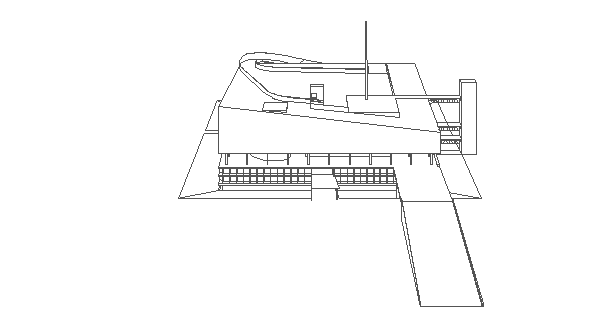
To my surprise, I was initially disappointed with the first group perspectives. The drawings themselves were fine, but I did not sense that I had learned anything new or significant after having gone through the whole process to get to this point. In retrospect, I was probably hoping for some sort of instantaneous revelation to occur. I did not know then that the revelation would take some time.
After several days of looking at the perspectives, I suddenly realized that the Palais des Congrès is essentially Le Corbusier's redesign of his own Villa Savoye.
| |
I'll tell you more later. And, by the way, where you serious when you wrote, "If you're an architect in 2104, and you're already over ten years old, and at this point you're still not famous, do yourself and the rest of the world a favor and stop designing inferior crap that then only makes the world more inferior."? Welcome to Suburbobliviopolis, I guess.
Let me know which curator over at Far Torum put these images together:
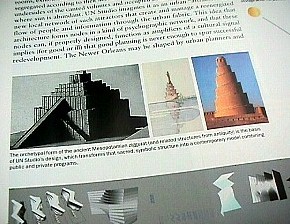 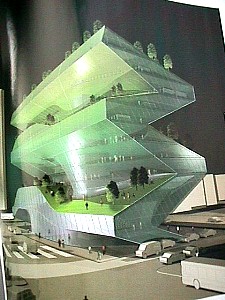
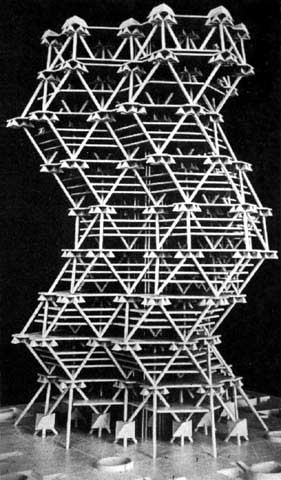
Hail Ziggurat indeed! Which reminds me, have you heard from Professor Aplomb lately? Is he still working on all those 'architecture of advertising' books?
A Preprandial Aperitif
Cucumber Slices, Caviar and 'Sociables' Crackers
Spinach and Mushroom Salad
A Glass of Blue Nun Wine
Sketches cum Napkins
A Trip to the Rest Room
Coquille St. Jacques
Pears Helene
The Speeches
Dried Fruit and Nuts
Australian Port and a Cigarette
The Ride Home
Plop Plop Fizz Fizz
Or is it a series of 'advertising of architecture' books? For some reason I can never get that straight in my head.
| |
Anyway, I like how the real estate cliche "location, location, location" is expanded in the travel industry to "packaging, packaging, packaging." Maybe that's the same metaphor/cliche for "star" architecture these days. So what then is architecture? Is it a hard, 'simple', 'natural' protective shell that enenders the continuation of life? Or is it a soft formlessness forever redesigning an applied shell it doesn't naturally have? Just for fun, look up the city of "Eutropia" in Calvino's Invisible Cities. Plus, it's on record that, coinciding with the time Constantinople was being built, Constantine began outlawing certain pagan sects/cults, especially those where the priesthoods engaged in...
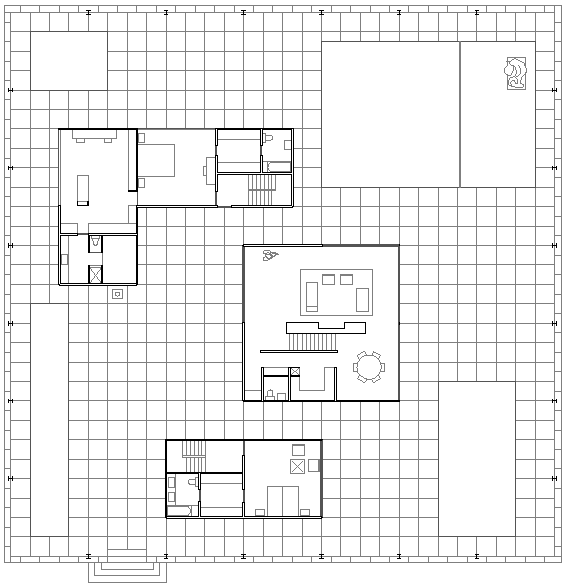
In a day or two I'll be finished with Houses Under an Uncommon Roof.
|




